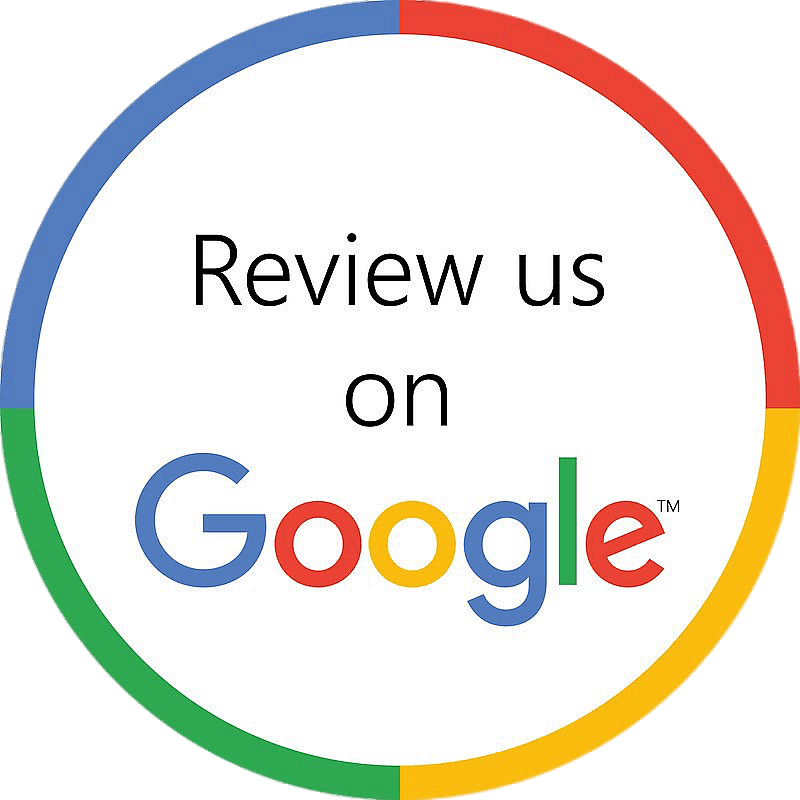
Digital Accessibility For Marketers Part 2: User Experience & Websites
In the first post of this five-part series on digital accessibility, we introduced the whats and whys of accessibility for marketers. Now, let’s check out the hows. We have deliberately limited our recommendations to the elements that are pretty easy to implement and are relevant for marketers. This exhaustive series is by no means a comprehensive list of all the accessibility standards and guidelines that businesses need to adhere to. If you’re interested in an in-depth understanding of the nitty-gritty of Web Content Accessibility Guidelines 2.0 and Section 508 regulations, you should participate in a TGPi e-learning class. It’s a self-paced program for you to utilize to keep or become up to date in your skill with fresh accessibility techniques and best practices. Let’s move on now to the recommendations!
Accessibility and User experience
User experience is the number-one focus of all marketers. Ease of use determines the success or failure of your marketing efforts, which may be the key to your long-term success as a web developer. Considering it, you want to shop online and run into a problem when inputting your credit card information, or the item you wanted is out of stock, excellent service can only be supplied by having a good UX experience. Since you were unable to complete what you set out to accomplish, and also, since you expected to be able to accomplish it, however, that wasn’t to be, you’ll most likely not return to these institutions!
These two scenarios are more than enough to make you give up on their business! As a marketer, you understand how to create an awesome user experience. You may also be testing it (great for you!) or have analytics set up to measure it. These measures are crucial to optimizing your advertising funnel. However, what you may not be doing is testing the user experience for accessibility.
User journeys
The path a user takes on your site, called a customer journey, is an important component. Internal primary factors, such as completing a purchase, can by complemented by external factors, such as leaving a comment. You should prioritize remediation for adhering to your essential user journeys for a number of reasons. First, although you may have amazing content throughout your website, if a user cannot complete their main objective for visiting your site, that is a potential customer you will never see again.
Many disabled individuals can face significant limitations when performing things other people take for granted. They typically expect these sorts of things, as the world was not designed with their particular disabilities in mind. If a minor is unable to get the thing they came to obtain on your website, you should know that it can open you up to a large pinkish can of legal danger. Typically, minor accessibility problems aren’t likely to reduce them to the point of initiating legal action. However, their inability to do the job they came to do on your website can prevent them in accomplishing their goal.
Testing your critical user paths
You can use a tool for user testing with those with disability or examine the code for each step with the help of a tool like TPGi s ARC Toolkit to identify WCAG violations through the manual testing path. If you want to be certain every component of your site is both accessible to and usable by your site visitors, you can choose ARC Monitoring’s User Flows feature to approve specific user tasks on different page paths at once, saving you time and effort. You can outline the user journey of an individual’s experience with particular interactions and components, such as images. You can track errors and even aim the flow and clarity of the internal restoration practices to produce better improvements.
You can also combine the information gathered by your ARC s Users Flows’ Monitoring tool with your other web analytics tools to find impediments that prevent users from completing their desired action.
Accessible websites
A website is your digital store or office digital storefront. Your first (or only) impression into a potential customer’s mind may be your digital store or office. You might add a couple of videos, or numerous images or lots of valuable blog content with great info to improve your interactivity. Being able to explain why people ought to purchase your goods or services is a considerable marketing asset. All these assets are great for building compelling copy. Making sure all of this information is accessible might appear difficult, but many of the best practices for accessible content are identical to best marketing strategies.
Descriptive link text
A really good marketer knows that clarity is an essential part of effective communication. If you’re too verbose and add superfluous words and phrases to your copy, you won’t reach your intended audience. In the same way, if you’re too minimalistic in your explanations, the customer may not grasp everything you’re saying. If the focus is high-quality content, it balances the extremes of safety concerns and conjecture. As well as link or anchor text following the same rules, your best link text lets customers know what to expect from the click. Descriptive link text is needed to strengthen your call to action.
The best way to prepare users for what they will see when they click Click Here or Download our white paper ? Obviously, the latter! (If you chose the former, you may need to rethink your target occupation.) Be clear about the CTA you re trying to set people up with (0o0o) but not put everything into your ad copy. Setting people up to know what they are getting into is essential.
Screen magnification tools allow people to use web content with low vision, while screen readers make it possible for blind people to read online text content. Link text is important because it plays an important role in ensuring that web content is accessible to individuals with impaired vision.
Screen readers like JAWS allow a user to literally go up and down the screen, reading a selection of elements instead of going through all the HTML from top to bottom. In moving from section to section, the screen reader merely reads out the anchor text for links, leaving the copy for future reference. A screen reader user who clicks on the link will be led to a different website if they respond to it. However, in this scenario, they won’t quickly and easily understand what this link works to.
Screen readers allow users to access an outline, which affords access to all items linked to a web page. This happens commonly, and problems like hyperlinks missing from the context and removed in the written format may occur.
Alt text for images
As a marketer, one of your key responsibilities is to ensure that your digital content is accessible to as many people as possible. This includes adding alt text to images so that people with visual impairments can understand what the image is depicting.
Adding alt text is fairly simple and only requires a few steps. First, identify the purpose of the image. This will help you determine what information to include in the alt text. Next, add the alt text to the image using the “alt” attribute. Finally, make sure to test the image with different screen readers to ensure that the alt text is being read correctly.
While adding alt text may seem like a small task, it can make a big difference for someone with a visual impairment who is trying to access your content.
Well-structured websites
As the internet continues to grow and evolve, so too must the way digital marketers structure their websites. With an ever-increasing focus on accessibility, it is essential that websites be well-structured and easy to navigate for users with disabilities.
There are a few key things to consider when structuring a website for accessibility. First, all content should be clearly organized and easy to find. Second, navigational elements should be clearly labeled and easy to use. Finally, website design should be simple and uncluttered, with plenty of white space.
By following these guidelines, digital marketers can ensure that their websites are accessible to everyone, regardless of ability. By making accessibility a priority, we can create a more inclusive online environment for all.
Color contrast ratios
Color contrast ratios are a digital accessibility metric that measures the difference in luminance between two colors. The ratio is expressed as a percentage, and the higher the percentage, the greater the contrast.
There are a few different ways to measure color contrast ratios, but one common method is to use the Web Content Accessibility Guidelines (WCAG) 2.0 standards. These standards recommend a minimum ratio of 4.5:1 for body text and 3:1 for larger text such as headings.
While some marketers may think that they can get away with lower contrast ratios, it’s important to remember that not everyone perceives color in the same way. Some people have difficulty distinguishing between certain colors, so it’s important to err on the side of caution and use high-contrast color schemes.
Accessible forms
As the internet continues to grow, so does the number of people who are using it. This means that more and more businesses are starting to move their operations online. However, with this shift comes the need for accessible forms for digital accessibility.
There are a few things that you need to keep in mind when creating accessible forms for your website. First, you need to make sure that the form is easy to navigate and use. Secondly, all form fields should be clearly labelled so that users know what information they need to provide.
Finally, you need to ensure that the form can be completed by everyone, regardless of their disability. By following these simple tips, you can create accessible forms that will help you reach a wider audience and promote digital accessibility for all.
Breadcrumbs
As the internet progresses, so does the way users engage with web content. In the past, web users would rely on breadcrumbs to help them navigate websites. Breadcrumbs are still used today, but they’ve taken on a new meaning in the digital age.
Now, breadcrumbs are used to help users understand where they are on a website and how they can get back to the home page or other pages they’ve visited. This is especially important for users with disabilities, who may have difficulty navigating websites without these helpful cues.
As a marketer, it’s important to keep this in mind when designing your website. Make sure your website is accessible to all users by including breadcrumbs on every page. This will not only make your site more user-friendly, but it will also improve your SEO ranking.
Chatbots and third-party integrations
Digital accessibility is an important part of marketing in the modern world. Chatbots and third-party integrations can help make your marketing more accessible to potential customers.
There are a number of ways to make your marketing more accessible. One way is to use chatbots. Chatbots can help you communicate with potential customers in real time. They can also help you keep track of customer interactions and follow up with them after they leave your website.
Another way to make your marketing more accessible is to use third-party integrations. Third-party integrations can help you connect with other businesses and services that your potential customers may be interested in. This can help you reach a wider audience and build relationships with other businesses that can benefit both of you.
Digital accessibility is an important part of marketing in the modern world.
Get ahead of the curve with our services
Digital marketing is an ever-growing industry that can be difficult to keep up with if you’re not familiar with the latest trends and technologies. However, don’t worry – our team of experts are here to help.
We offer a variety of digital marketing services that will help you get ahead of the curve and stay ahead of your competition. Our services include SEO, PPC, social media advertising, and web design.
We understand that every business is different, so we tailor our services to fit your specific needs. We also offer a free consultation so that we can understand your business and goals better.
If you’re looking for a reliable and trustworthy digital marketing agency, then look no further than our team at Digital Encounter. We’d be happy to help you achieve your online goals.
Privacy Policy for Digital Encounter Marketing
At Digital Encounter Marketing, accessible from digitalencountermarketing.com, one of our main priorities is the privacy of our visitors. This Privacy Policy document contains types of information that is collected and recorded by Digital Encounter Marketing and how we use it.
If you have additional questions or require more information about our Privacy Policy, do not hesitate to contact us.
Log Files
Digital Encounter Marketing follows a standard procedure of using log files. These files log visitors when they visit websites. All hosting companies do this and a part of hosting services’ analytics. The information collected by log files include internet protocol (IP) addresses, browser type, Internet Service Provider (ISP), date and time stamp, referring/exit pages, and possibly the number of clicks. These are not linked to any information that is personally identifiable. The purpose of the information is for analyzing trends, administering the site, tracking users’ movement on the website, and gathering demographic information.
Cookies and Web Beacons
Like any other website, Digital Encounter Marketing uses ‘cookies’. These cookies are used to store information including visitors’ preferences, and the pages on the website that the visitor accessed or visited. The information is used to optimize the users’ experience by customizing our web page content based on visitors’ browser type and/or other information.
Google DoubleClick DART Cookie
Google is one of a third-party vendor on our site. It also uses cookies, known as DART cookies, to serve ads to our site visitors based upon their visit to www.website.com and other sites on the internet. However, visitors may choose to decline the use of DART cookies by visiting the Google ad and content network Privacy Policy at the following URL – https://policies.google.com/technologies/ads
Our Advertising Partners
Some of advertisers on our site may use cookies and web beacons. Our advertising partners are listed below. Each of our advertising partners has their own Privacy Policy for their policies on user data. For easier access, we hyperlinked to their Privacy Policies below.
Privacy Policies
You may consult this list to find the Privacy Policy for each of the advertising partners of Digital Encounter Marketing.
Third-party ad servers or ad networks uses technologies like cookies, JavaScript, or Web Beacons that are used in their respective advertisements and links that appear on Digital Encounter Marketing, which are sent directly to users’ browser. They automatically receive your IP address when this occurs. These technologies are used to measure the effectiveness of their advertising campaigns and/or to personalize the advertising content that you see on websites that you visit.
Note that Digital Encounter Marketing has no access to or control over these cookies that are used by third-party advertisers.
Third Party Privacy Policies
Digital Encounter Marketing’s Privacy Policy does not apply to other advertisers or websites. Thus, we are advising you to consult the respective Privacy Policies of these third-party ad servers for more detailed information. It may include their practices and instructions about how to opt-out of certain options.
You can choose to disable cookies through your individual browser options. To know more detailed information about cookie management with specific web browsers, it can be found at the browsers’ respective websites. What Are Cookies?
Children’s Information
Another part of our priority is adding protection for children while using the internet. We encourage parents and guardians to observe, participate in, and/or monitor and guide their online activity.
Digital Encounter Marketing does not knowingly collect any Personal Identifiable Information from children under the age of 13. If you think that your child provided this kind of information on our website, we strongly encourage you to contact us immediately and we will do our best efforts to promptly remove such information from our records.
Online Privacy Policy Only
This Privacy Policy applies only to our online activities and is valid for visitors to our website with regards to the information that they shared and/or collect in Digital Encounter Marketing. This policy is not applicable to any information collected offline or via channels other than this website.
Consent
By using our website, you hereby consent to our Privacy Policy and agree to its Terms and Conditions.


